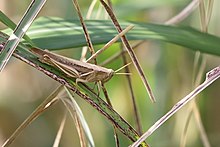
Sex is the trait that determines whether a sexually reproducing organism produces male or female gametes. During sexual reproduction, a male and a female gamete fuse to form a zygote, which develops into an offspring that inherits traits from each parent. By convention, organisms that produce smaller, more mobile gametes are called male, while organisms that produce produce larger, non-mobile gametes are called female. An organism, such as most flowering plants, that produces both types of gamete is a hermaphrodite.
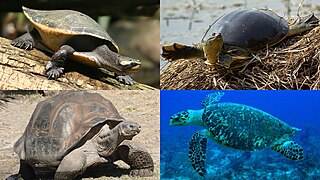
Turtles are reptiles of the order Testudines, characterized by a special shell developed mainly from their ribs. Modern turtles are divided into two major groups, the Pleurodira and Cryptodira, which differ in the way the head retracts. There are 360 living and recently extinct species of turtles, including land-dwelling tortoises and freshwater terrapins. They are found on most continents, some islands and, in the case of sea turtles, much of the ocean. Like other amniotes they breathe air and do not lay eggs underwater, although many species live in or around water.

Mackerel is a common name applied to a number of different species of pelagic fish, mostly from the family Scombridae. They are found in both temperate and tropical seas, mostly living along the coast or offshore in the oceanic environment.

Butterflies are winged insects from the lepidopteran suborder Rhopalocera, characterized by large, often brightly coloured wings that often fold together when at rest, and a conspicuous, fluttering flight. The group comprises the superfamilies Hedyloidea and Papilionoidea. The oldest butterfly fossils have been dated to the Paleocene, about 56 million years ago, though they may have originated earlier.

Extinction is the termination of a taxon by the death of its last member. A taxon may become functionally extinct before the death of its last member if it loses the capacity to reproduce and recover. Because a species' potential range may be very large, determining this moment is difficult, and is usually done retrospectively. This difficulty leads to phenomena such as Lazarus taxa, where a species presumed extinct abruptly "reappears" after a period of apparent absence.

Herring are forage fish, mostly belonging to the family of Clupeidae.

Endemism is the state of a species only being found in a single defined geographic location, such as an island, state, nation, country or other defined zone; organisms that are indigenous to a place are not endemic to it if they are also found elsewhere. For example, the Cape sugarbird is found exclusively in southwestern South Africa and is therefore said to be endemic to that particular part of the world. An endemic species can also be referred to as an endemism or, in scientific literature, as an endemite.
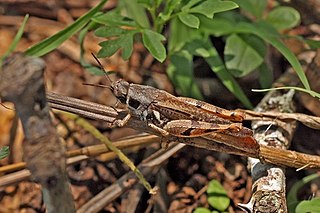
The subfamily Catantopinae is a group of insects classified under family Acrididae. Genera such as Macrotona may sometimes called "spur-throated grasshoppers", but that name is also used for grasshoppers from other subfamilies, including the genus Melanoplus from the Melanoplinae.

A flower, also known as a bloom or blossom, is the reproductive structure found in flowering plants. Flowers consist of a combination of vegetative organs – sepals that enclose and protect the developing flower, petals that attract pollinators, and reproductive organs that produce gametophytes, which in flowering plants produce gametes. The male gametophytes, which produce sperm, are enclosed within pollen grains produced in the anthers. The female gametophytes are contained within the ovules produced in the carpels.
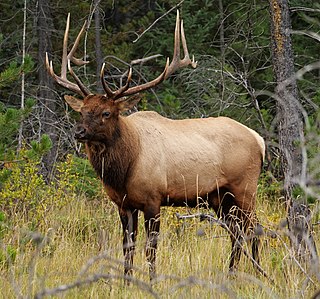
The elk, or wapiti, is the second largest species within the deer family, Cervidae, and one of the largest terrestrial mammals in its native range of North America and Central and East Asia. The word "elk" originally referred to the European variety of the moose, Alces alces, but was transferred to Cervus canadensis by North American colonists. The name "wapiti" derives from a Shawnee and Cree word meaning "white rump" for the distinctive light fur in the rear region, just like the Bighorn Sheep.

Stenobothrus is a genus of grasshoppers found in Asia, Europe, and North Africa.

Stenocatantops is a genus of grasshoppers in the family Acrididae and subfamily Catantopinae. The recorded distribution of species includes: India, China, Indo-China and Malesia through to Australia.
Ectadia is a genus of Asian bush crickets of the tribe Elimaeini. Records are primarily from southern China and Indochina.
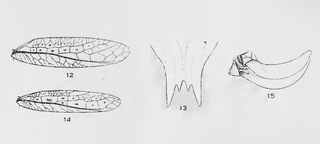
Stictophaula is a genus of Asian Tettigoniidae of the tribe Holochlorini within the subfamily Phaneropterinae. They are found in Indo-China, China, the Philippines, Malaysia, and western Indonesia.
Phlugiolopsis is a genus of Asian bush crickets belonging to the tribe Meconematini in the subfamily Meconematinae. They are found in Indochina, China and Sumatra.

Phonarellus is a genus of crickets in the family Gryllidae and tribe Gryllini. Species can be found in mainland Asia, Japan and tropical Africa.

Stenocatantops angustifrons, the common tropical sharptail, is a species of short-horned grasshopper in the family Acrididae. It is found in Southeast Asia and Oceania.

Stenocatantops splendens is a species of short-horned grasshopper in the family Acrididae. It is found in Indomalaya and eastern Asia.

Ochrilidia is a genus of grasshoppers in the subfamily Gomphocerinae and typical of the tribe Ochrilidiini; it was erected by Carl Stål in 1873. Species have been recorded from Africa, the Middle East through to India and certain Mediterranean islands in Europe.
Zubovskya is a genus of Palaearctic grasshoppers in the tribe Podismini and subtribe Miramellina, erected by D.P. Dovnar-Zapolskij in 1932. Species have a very disjointed distribution, with records from Romania, northern and eastern Russia, northern China, Korea and Japan.
